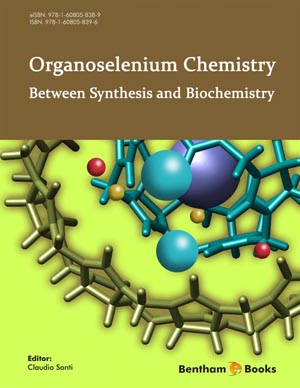Abstract
77Se NMR spectroscopy has been established as a powerful tool in the study of the selenium chemistry. 77Se NMR chemical shifts (δ(Se)) are sharply sensitive to the structural changes in selenium compounds. Therefore, they are widely applied to analyze the chemical bonds around Se atoms and to determine the structures. On the other hand, the calculated absolute magnetic shielding tensors of Se (σ(Se)) become much reliable. It is now possible to assign the spectra based not only on the empirical rules but also on the theoretical supports. Interpretation of the shift values separately by the contributions from the occupied orbitals and the orbital-orbital transitions is the typical example of the theoretical treatment. The theoretical background for the chemical shifts is explained, together with the coupling constants (J(Se, X)), although briefly. 77Se NMR spectra are measured on a daily basis and the structures of selenium compounds are determined through the assignment of the spectra. Applications of 77Se NMR are mainly discussed so as to give good hints when the spectra are assigned, for the better understanding of the selenium chemistry. Orientational effect on σ(Se) and δ(Se) by aryl groups, mechanisms for J(Se, X), NICS and relativistic effect on σ(Se) are also discussed, together with the usual applications.
Keywords: Relativistic effect, Ab initio calculations, Ligand effects, NMR spectroscopy, Selenium, Chemical shift, Spin-spin coupling, Isotopic effect, Natural bond orbital analysis, Structures.






















